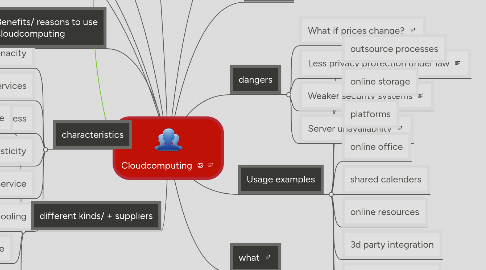Cloudcomputing
af Michael Murphy


1. Grid computing
2. Cluster computing
3. Super computing
4. characteristics
4.1. Multi Tenacity
4.2. On demand self services
4.3. Broad network access
4.4. Rapid elasticity
4.5. Measured service
4.6. resource pooling
5. different kinds/ + suppliers
5.1. Infrastructure-as-a-service
5.1.1. Joyent
5.1.2. Amazon web services
5.1.3. Nirvanix
5.1.4. XCalibre
5.1.5. Akamai
5.2. Platform-as-a-service
5.2.1. Mosso
5.2.2. Google App Engine
5.2.3. Rails One
5.3. Software-as-a-service
5.3.1. Salesforce
5.3.2. Gmail
5.3.3. Gliffy
